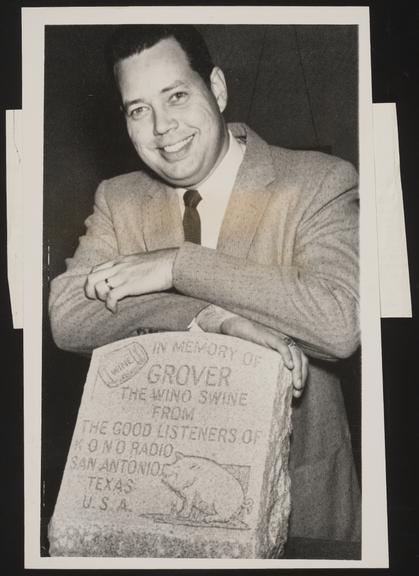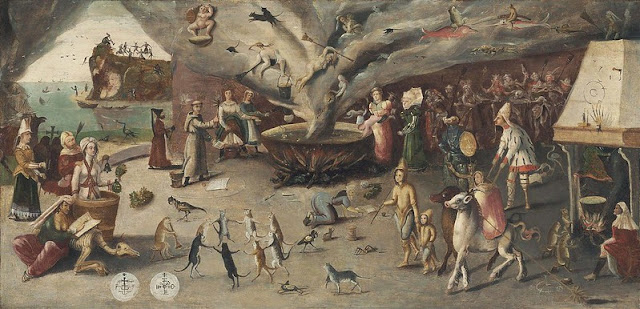A while back, I did a post sharing some outstanding examples of that little-discussed, but thoroughly endearing phenomenon I’ve dubbed “libelous tombstones.” Epitaphs are usually solemn and respectful things, but surprisingly often, they are used as vehicles to insult the dead (and the living,) make defamatory remarks, and generally raise hell.
And I for one applaud them for it.
In the older days, at least, the practice was so common that before I knew it, I had accumulated enough news items on the subject for a sequel. (Yes, I have a whole file of them, which I suppose is further evidence that my laptop would make fascinating material for anyone studying abnormal psychology.)
Let’s kick things off with this family dispute from the “Yorkshire Argus,” June 23, 1914:
Consett magistrates were asked by Mr. R. W. Rippon, a London barrister, to issue summonses for an alleged libel published upon a large stone cross that had been erected in Benfieldside Cemetery to the memory of the applicant's father. Rippon's complaint was that while his father's name was inscribed upon the front of the stone, the name of his first wife, who was Mr. Rippon's mother, was upon the side in small letters. The name of the second wife of Mr. Rippon’s father, however, had been inscribed prominently and immediately before the name of the appellant's father.
Proceeding, Mr. Rippon contended that undue prominence had been given to the name of the second wife, white that of his mother had been subjected to a criminal libel. He therefore asked for a summons against Elizabeth Rogerson, a legatee, the Benfieldside Burial Board, and J. Hamilton, clerk to the board.
In answer to the presiding magistrate, Mr. Rippon said the stone had been erected on the instructions of Elizabeth Rogerson, who had paid for it.
The magistrates eventually suggested that charges should be formalized in writing and be forwarded to the clerk before the next sitting of the court.
 |
| "Montreal Gazette," August 2, 1915, via Newspapers.com |
The above reflects a somewhat complicated story. Charles Becker, an ex-New York police officer, had been tried and convicted of the then-notorious murder of bookmaker Herman Rosenthal. Becker was executed on July 30, 1915. Becker was no angel--he was part of a police protection racket protecting the illegal gambling operations. Rosenthal evidently blabbed to reporters, leading to Becker allegedly hiring Mafia hit men to eliminate the overly-chatty bookie. However, Becker went to the electric chair protesting his innocence to the last, and there are crime historians who believe he was telling the truth.
Further murder accusations were noted in this item from the “Leavenworth Post,” September 17, 1912:
Appleton, Wis., Sept. 17.--Unless a monument over the grave of a little girl in the cemetery at Maine, a small town near here, is removed this week, or the inscription is completely obliterated, the municipal court will be asked to order the father of the child to remove it. The action is the outgrowth of the wording of the epitaph, which is as follows: "Laura lies in this grave and lot; she was shot by Guy and Jakie Scott." Laura Freeman, aged 8 years, and a daughter of Sidna Freeman, a prominent farmer, was accidentally shot and killed by Jack Scott, aged 11 years, last March. George Scott, the boy's father, objects to the epitaph. The inhabitants of the town have taken sides and it might be that there will be serious trouble before the matter is finally settled.
The elder Scott frequently has asked Freeman to change the wording of the stone, but always he has been met with scorn. The men frequently have come near to blows, because of the controversy. Time has temporarily been called, however, pending the decision of the court.
There are many who predict that Freeman will be ordered to change the stone, while others are quite certain that the court will take no action whatsoever.
The “Fargo Forum,” October 7, 1897:
An exchange says this is an inscription upon a Tennessee tombstone:
L. B., son of J. C. and L.J. Cate, born April 10, 1870. Married Millie Freeman Dec. 21, 1887; was shot and killed by Bill Penick Dec. 11, 1896; caused by Penick swearing a lie on Cate's wife. Aged 26 years, 8 months and 1 day.
Now Bill Penick brings suit against the designer and the maker of the tombstone for libel.
A short and not-so-sweet one from the “Wilmington Journal,” May 10, 1866:
A Trenton paper says: “A walk through the Morrisville burying ground, just over the river, will bring to one's notice a queer epitaph. It is to Samuel McCracken, a former resident of that village, and bears the following addenda to the record of his birth and death: ‘If all the leading politicians and priests go to Heaven, I want to get off at some other station.' To put this on his grave stone was the order of the man by directions found in his will."
The Newport News “Daily Press,” July 29, 1905:
YORK, PA., July 28.-- A conspicuous spot in Greenmount cemetery, in this city, is occupied by a handsome Scotch marble granite monument bearing upon one of its sides a bold inscription, saying:
A Victim of Chloroform Poisoning and Shock.
The result of a doctor's negligence.
Why the inscription is there and what story is back of it no one knows save the man who raised the monument and a few of his most intimate friends.
The monument marks the grave of the wife of a prosperous York merchant. When questioned, he says: "It is all the truth. Some tombstone inscriptions may lie, but that one does not. It is a long and sad story which I do not care to repeat."
Another commemoration to a murder mystery comes from the “Weekly Plain Dealer,” September 10, 1845:
The following epitaph was taken recently from a church yard in Pennsylvania.
“In memory of Polly Williams, who was found murdered by her seducer, Aug 17, 1810--aged 18 years.
Behold with pity you that pass by
Here doth the bones of Polly Williams lie
Who was cut off in her tender bloom
By a vile retch her pretended groom."
The “vile retch,” a young man named Philip Rogers, was tried for Polly’s murder, but was acquitted, leaving her killing technically unsolved.
A story strikingly similar to the Laura Freeman case was related in the “Boston Globe,” January 10, 1904:
AUGUSTA, Me, Jan 9-"Shot by the son of Elhanan Williams" is the very unusual announcement carved in large letters on a tombstone made not long ago by an Augusta marble dealer and sent to the town of South China. Some indignation has been expressed by the neighbors and friends of the Williams family over the inscription on the stone, in view of the fact that the shooting was purely accidental.
In the summer of 1902 Herbert B. Plaisted, son of Benj. and Emma F. Plaisted, with his brother, Fred, was out in a boat fishing in China lake. On the shore, about 100 yards away, was Harold Williams, 17, who was visiting there from Waltham, Mass.
In order that the boys in the boat might hear the of the bullet as it whizzed by them, Williams discharged a 22-caliber rifle in their direction, aiming about 20 feet to one side.
The bullet hit a wave and was deflected, striking Herbert squarely in the forehead just above the left eye. He died a few days later.
Another shout-out to incompetent medical professionals was recorded in the “Jefferson City Tribune,” November 10, 1887:
A tombstone bearing the following inscription was erected in a New Jersey graveyard recently: "In memory of Charles H. Salmon, who was born Sept. 10, 1858. He grew, waxed strong and developed into a noble son and loving brother. He came to his death on the 12th of October, 1884, by the hand of a careless drug clerk and two excited doctors at 12 o'clock at night, in Kansas."
The “Register News-Pictorial,” February 13, 1930:
LONDON, Tuesday. Mr. Justice McNaughton today refused to allow costs against Mr. Walter Ralston, whose wife had unsuccessfully sued him for libel because he had erected a tombstone to her memory after they had separated. He ordered that each side should pay its own costs.
The inscription on the stone has been removed, and Mrs. Ralston has undertaken to have the entry of her “death” deleted from the register.
I will wrap up this collection with the following item from the “El Paso Times,” February 25, 1959. While it is not exactly “libelous”--”overly frank” might be a better description--it is unique enough to deserve notice.
Auckland, New Zealand (UPI)--A marble tombstone for an English pig that drank himself to death arrived here Tuesday aboard the Orient Liner Orsova.
The tombstone is the gift of American admirers of a porker named Grover and is on its way to Rottingdean, England.
Grover the pig broke into his master's wine cellar last December and drank his complete stock of wines before going out in a drunken stupor.
Radio Announcer Doug China of San Antonio, campaigned to immortalize Grover's accomplishment, and bought the tombstone with donations sent in by listeners to his program.























